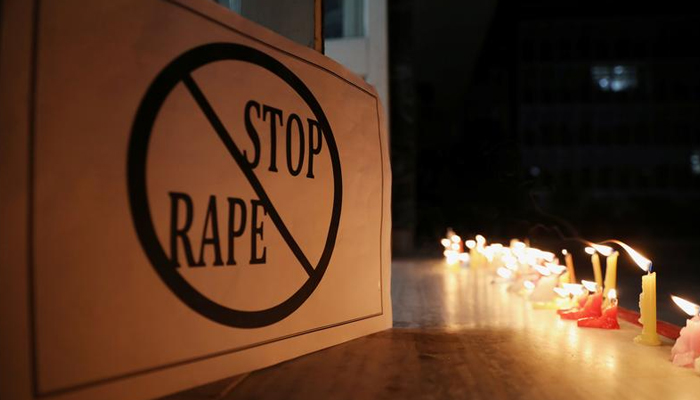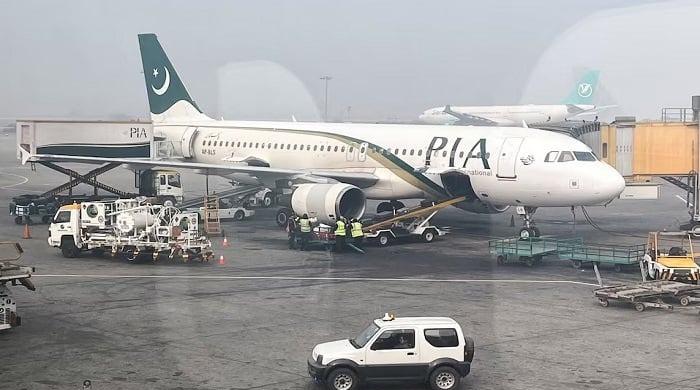How to handle a rape case
About 11 rape cases are reported every day in Pakistan with over 22,000 such incidents reported to police in the last six years (2015-21), writes Rida Tahir
June 01, 2023

The police force is a key component of the criminal justice system (CJS). A criminal case proceeds to the court process after a first information report (FIR) is lodged with the police.
About 11 rape cases are reported every day in Pakistan with over 22,000 such incidents reported to police in the last six years (2015-21), according to data revealed by the Human Rights Commission of Pakistan (HRCP).
The police force is tasked with investigating and submitting the investigation report (challan) to the prosecution under Section 173 of the Code of Criminal Procedure (CrPC).
It is important to highlight that an effective investigation conducted by the police can significantly increase the scope for conviction in sexual violence cases, which presently stands at the abysmally low rate of 3%.
An example of the importance of effective investigation is DNA evidence in sexual violence cases. It has been held by the Supreme Court of Pakistan that “DNA test report due to its scientific accuracy and conclusiveness, was considered as a gold standard to establish the identity of an accused...’’
However, investigation can be an extremely technical process, which is why rules are required, which need to be stringently followed by investigating officers (IOs) to ensure an effective investigation.
Given the high number of rape cases across the country, it is important to have an overview of the Anti-Rape (Investigation) Rules 2022. The rules were notified by the Ministry of Law and Justice under the Anti-Rape (Investigation and Trial) Act 2021.
The Anti-Rape Act was enacted to provide expeditious redressal of rape and sexual abuse crimes in respect of women and children through special investigation teams and special courts providing efficacious procedures, speedy trials and evidence.
Special Sexual Offences Investigation Units (SSOIUs) were introduced under Section 9 of the Anti-Rape Act to achieve the objective of establishing special investigation teams.
SSOIUs hold special jurisdiction to investigate sexual and gender-based violence (SGBV) offences under their designated police stations. These units comprise police officers who have received training on investigation in relation to sexual offences.
Owing to their special training, SSOIUs can reduce delays during investigations. As a result, the cases can be prevented from being delayed beyond the stipulated time of 4 months under the Anti-Rape Act 2021.
According to Section 9 (3) of the Act, the offences over which SSOIUs have jurisdiction to investigate are divided into two categories. In Schedule, I, the offences will be investigated by SSOIUs.
These offences include (but are not limited to): 292-B (child pornography), 292-C (punishment for child pornography), and 354 (assault or criminal force to woman with intent to outrage her modesty) of the Pakistan Penal Code (PPC) 1860.
The offences committed under Schedule II of the Anti-Rape Act 2021 are to be investigated by the SSOIUs under the supervision of a deputy superintendent of police (DSP) or an officer not below the rank of BPS-17. These offences include (but are not limited to): 375 (rape), 377 (unnatural offences), and 377A (sexual abuse) of the PPC.
Building on that architecture of SSOIUs in the Act, the rules state the ‘duties of officer-in-charge and investigation officer’ under Chapter 2 and procedures relating to ‘collection of evidence’ under Chapter 3.
Rule 3 is titled ‘officer-in-charge’ and states that the “officer-in-charge shall be the head of the special sexual offences investigation unit (SSOIU)’’. Under Rule 3(2) (a-i), the duties of the officer-in-charge are mentioned, which include: immediate registration of FIR; liaison between police investigation, prosecution, anti-rape crisis cell (ARCC) and forensic department from the beginning till the end of the case; designation of a female police officer who shall assist the investigation till its conclusion.
“Ensuring the female police officer (where appointed) is present during statements taken from the victim at the ARCC for medico-legal examination (MLE) and forensic laboratory for DNA reference sample submission; cordoning off the crime scene and ensuring the safety and security of the evidence; ensuring timely and correct collection of evidence for each case and occasion.
“Ensuring timely submission of blood and urine samples to the relevant forensic laboratory along with MLO’s request letter by the IO; ensuring that recording of statement of the survivor shall be allowed to be taken at the ARCC; and maintaining the chain of custody of evidence.”
Rule 3(3) states that strict measures will be taken against an officer-in-charge where a failure is proved to conduct a proper investigation. Rule 4 stipulates the method for registration of FIR and adds that the statement of victim "…shall be recorded in private and in the presence of a person of victim’s choice and such recording of statement may be permitted only if prior consent is taken from the victim."
Additionally, Rule 5 states the duties of IOs, which include sealing the crime scene and collecting/coordinating collection of all potential evidence including (but not limited to) recording, taking photographs, CCTV footage, samples, fibre or trace evidence. Rule 5 (2) states that the IO shall escort the victim for MLE.Rule 6 – titled ‘collection of evidence’ – mandates that the relevant evidence is collected from the scene of occurrence immediately and without unnecessary delay.
Also, Rule 9 is titled ‘marking, packaging and documenting other evidence’. It mandates marking: case number, item number, description; and date of recovery or receiving of the collected evidence.
Finally, Rule 8 is titled ‘chain of custody’. It instructs the IO and all the other persons under the act and rules involved in the process of collection, transmission, examination or otherwise of the evidence to maintain a safe chain of custody for the evidence.
Overall, the rules are a good addition to the existing framework. For example, the honourable Sindh High Court through its order in 2019 in the case of Kainaat Soomro v Province of Sindh (CP No 5920/2015) had laid down standard operating procedures (SOPs) that should be adhered to in sexual violence cases.
It is also pertinent to mention that the Sindh police department took a progressive lead in notifying 30 SSOIUs across Sindh, as per the notification in September 2022.
Therefore, the rules are a welcome addition to providing guidelines to the SSOIUs.Nevertheless, the rules need to be amended to ensure that they are in sync with the provincial police rules, caselaw, Qanoon-e-Shahadat 1984 and CrPC 1898. Also, linkages need to be built with forensic science agencies.
In my experience, the absence of DNA evidence collected by the IO often results from a lack of funding and coordination mechanism/absence of focal persons, etc as the tests are extremely expensive and often lack of budgeting is an issue.
This could be tackled by ensuring that the anti-rape fund under Section 20 of the Anti-Rape Act is utilised for covering the monetary costs attached to the effective implementation of the investigation rules.
The writer is a barrister. She tweets @RidaT95 and can be reached at [email protected]
Originally published in The News









